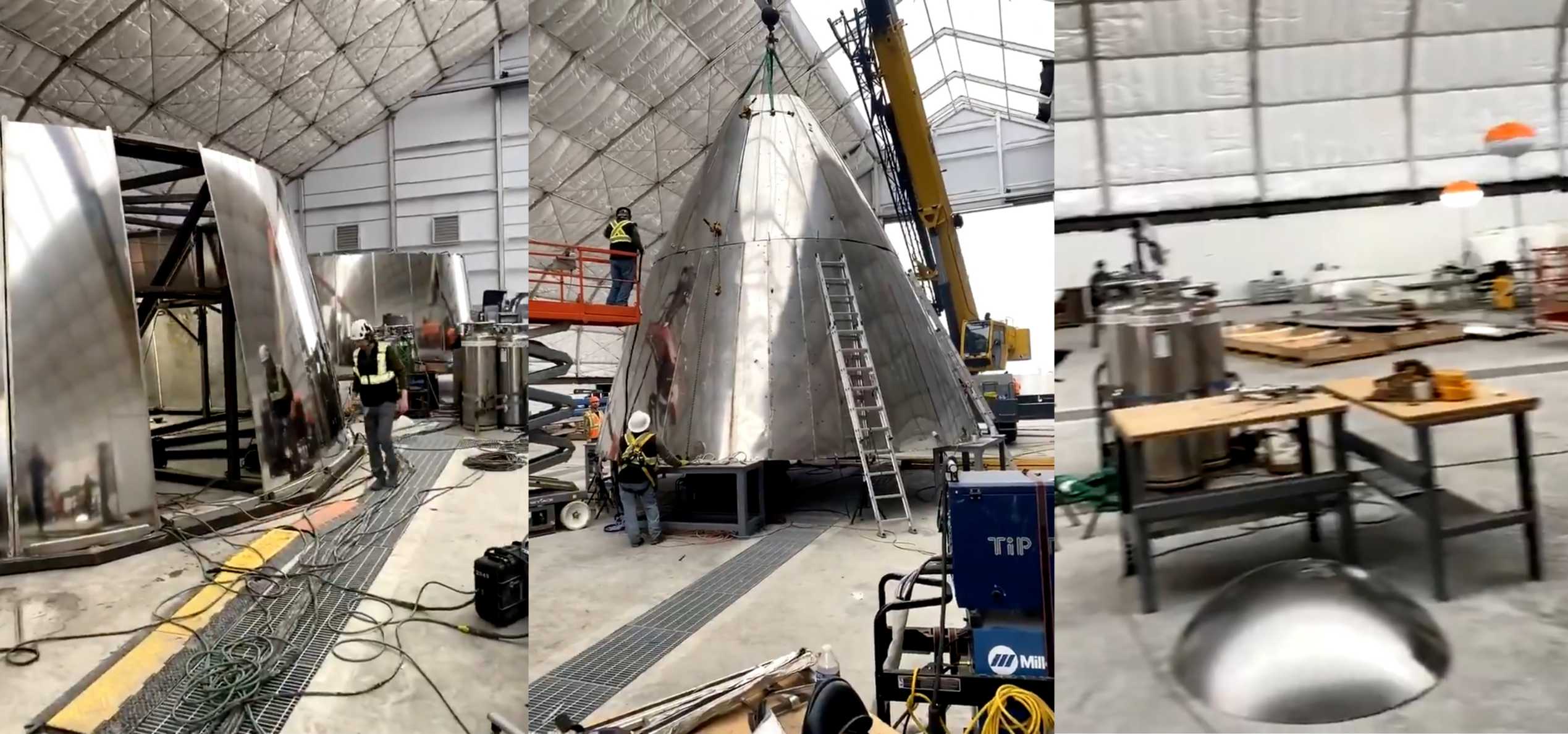
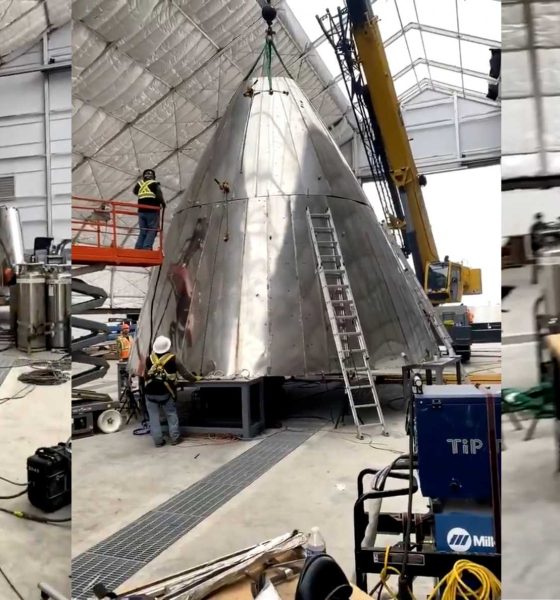
News
SpaceX’s first Starship test flight imminent as rocket nosecone nears completion
Elon Musk has posted a new glimpse inside SpaceX’s South Texas Starship factory, revealing a nearly-completed rocket nosecone and indicating that the first upgraded Starship prototype’s flight debut is imminent.
SpaceX teams have been working around the clock for a little over a month to build the first full-scale, flightworthy Starship prototype, a process that only began after two ‘test tanks’ were fabricated, assembled, and pressurized until they burst on January 10th and 28th. Built with improved tools and methods, those test results – particularly from the second test tank – allowed SpaceX to empirically confirm that its current infrastructure and techniques are ready to manufacture orbital-class (and even human-rated) Starships right now.
And so work on the first truly flightworthy Starship prototype – known as SN01 (serial number 01) – thus began in earnest around mid-January, perhaps less than a month ago. Over the course of that month, SpaceX’s South Texas team has made spectacular progress. Starship SN01’s business half – comprised of a Raptor engine section, a liquid oxygen tank, a methane tank, and all associated tank domes and plumbing – is likely just a single big stacking and welding event away from being structurally complete. The upper section of the prototype – Starship’s curved nose and a few less-critical steel rings – has, however, been a bit more elusive.
Aside from a few partial glimpses earlier this month, that nose appeared for the first time two or so weeks on a local resident’s livestream earlier today – just a few hours before Musk offered an even better view inside the same tent it was spotted in. Situated in the second large sprung structure erected at SpaceX’s Boca Chica, Texas facilities, Musk’s video revealed that that tent – really only completed less than two weeks ago – is already full of Starship production hardware.

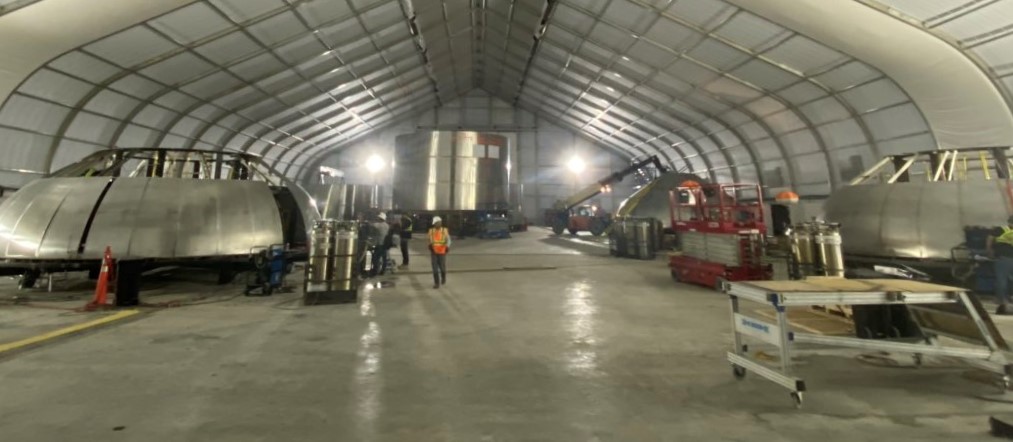
Without exaggerating, it’s safe to say that SpaceX has effectively gone from a handful of parts worth of Texas rocket production to a multi-vehicle, Starship production line concurrently manufacturing multiple vehicles in about eight weeks. While it would be theoretically easy for critics and a more general audience to see little more than some cheap stainless steel parts in a few hastily-constructed temporary tents, the reality is that SpaceX has already proven – at a minimum – that a steel Starship built with the exact same tools, facilities, and methods will likely be capable of spaceflight.
SpaceX’s January 2020 Starship test tank program proved as much, demonstrating that thin steel tanks built in tents can serve as orbital-class pressure vessels and survive at internal pressures greater as high as 8.5 bar (125 psi) while filled with cryogenic (extremely cold) liquid. Meanwhile, Tesla’s Fremont factory General Assembly line 4 (GA4) – having continuously churned out high-quality Model 3s for more than a year – has proven that sprung structures can make for fast, cheap, and more or less permanent factory solutions. Prospective SpaceX competitor Blue Origin even based its own brand new headquarters – opened in January 2020 – around an odd U-shaped sprung structure.
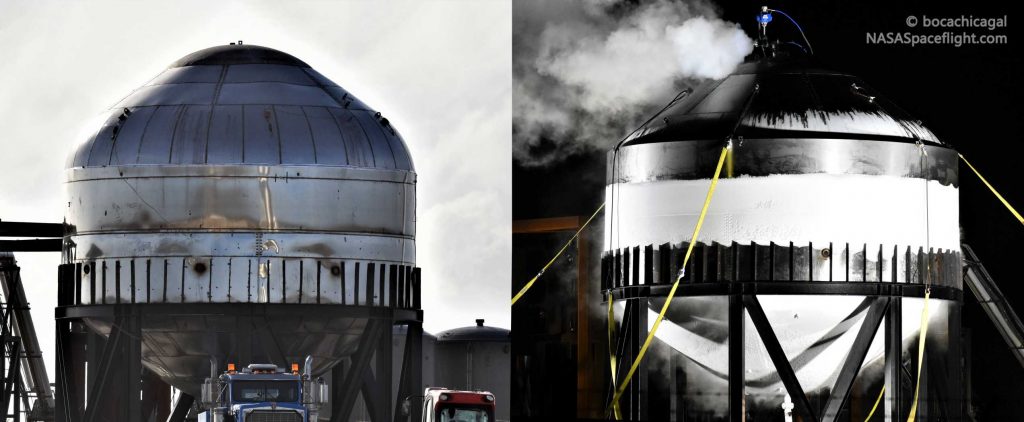
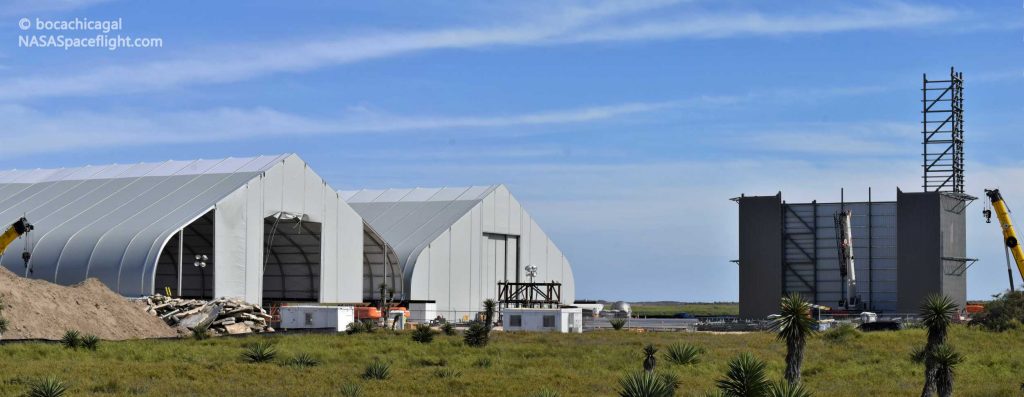
Nevertheless, SpaceX’s small test tank successes do not necessarily guarantee that the same kind of tests performed at full scale will be equally successful. The biggest proof of concept for SpaceX’s upgraded Starship production methods will involve manufacturing, fueling, static-firing, and – eventually – flying a complete Starship prototype built with the same methods as those test tanks.
The pressure vessel section of Starship SN01 – said pathfinder prototype – appears to be nearly complete, missing only its integrated engine section and oxygen tank dome before it could theoretically be ready to start cryogenic testing. Incredibly, information acquired and published by NASASpaceflight.com reporter Michael Baylor indicates that SpaceX wants to complete the prototype and transport Starship to its nearby launch site just ten days from now.
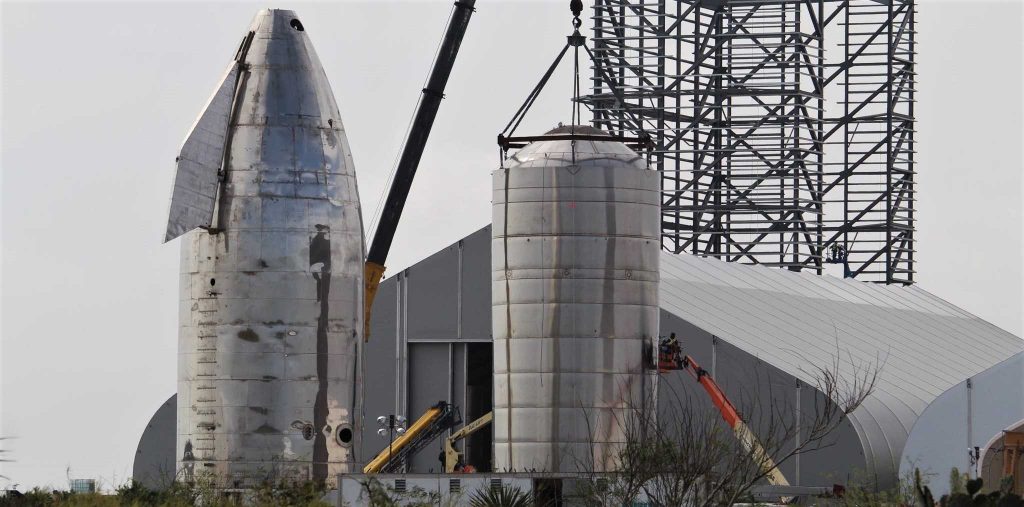
A step further, if things go as planned, SpaceX wants to install Starship SN01’s three Raptor engines and perform a live static fire test as soon as early March. In short, SpaceX’s Starship program is likely about to enter a new period of ambitious, rapid-fire testing. Stay tuned!
Check out Teslarati’s Marketplace! We offer Tesla accessories, including for the Tesla Cybertruck and Tesla Model 3.

News
Tesla earns top honors at MotorTrend’s SDV Innovator Awards
MotorTrend’s SDV Awards were presented during CES 2026 in Las Vegas.

Tesla emerged as one of the most recognized automakers at MotorTrend’s 2026 Software-Defined Vehicle (SDV) Innovator Awards.
As could be seen in a press release from the publication, two key Tesla employees were honored for their work on AI, autonomy, and vehicle software. MotorTrend’s SDV Awards were presented during CES 2026 in Las Vegas.
Tesla leaders and engineers recognized
The fourth annual SDV Innovator Awards celebrate pioneers and experts who are pushing the automotive industry deeper into software-driven development. Among the most notable honorees for this year was Ashok Elluswamy, Tesla’s Vice President of AI Software, who received a Pioneer Award for his role in advancing artificial intelligence and autonomy across the company’s vehicle lineup.
Tesla also secured recognition in the Expert category, with Lawson Fulton, a staff Autopilot machine learning engineer, honored for his contributions to Tesla’s driver-assistance and autonomous systems.
Tesla’s software-first strategy
While automakers like General Motors, Ford, and Rivian also received recognition, Tesla’s multiple awards stood out given the company’s outsized role in popularizing software-defined vehicles over the past decade. From frequent OTA updates to its data-driven approach to autonomy, Tesla has consistently treated vehicles as evolving software platforms rather than static products.
This has made Tesla’s vehicles very unique in their respective sectors, as they are arguably the only cars that objectively get better over time. This is especially true for vehicles that are loaded with the company’s Full Self-Driving system, which are getting progressively more intelligent and autonomous over time. The majority of Tesla’s updates to its vehicles are free as well, which is very much appreciated by customers worldwide.
Elon Musk
Judge clears path for Elon Musk’s OpenAI lawsuit to go before a jury
The decision maintains Musk’s claims that OpenAI’s shift toward a for-profit structure violated early assurances made to him as a co-founder.

A U.S. judge has ruled that Elon Musk’s lawsuit accusing OpenAI of abandoning its founding nonprofit mission can proceed to a jury trial.
The decision maintains Musk’s claims that OpenAI’s shift toward a for-profit structure violated early assurances made to him as a co-founder. These claims are directly opposed by OpenAI.
Judge says disputed facts warrant a trial
At a hearing in Oakland, U.S. District Judge Yvonne Gonzalez Rogers stated that there was “plenty of evidence” suggesting that OpenAI leaders had promised that the organization’s original nonprofit structure would be maintained. She ruled that those disputed facts should be evaluated by a jury at a trial in March rather than decided by the court at this stage, as noted in a Reuters report.
Musk helped co-found OpenAI in 2015 but left the organization in 2018. In his lawsuit, he argued that he contributed roughly $38 million, or about 60% of OpenAI’s early funding, based on assurances that the company would remain a nonprofit dedicated to the public benefit. He is seeking unspecified monetary damages tied to what he describes as “ill-gotten gains.”
OpenAI, however, has repeatedly rejected Musk’s allegations. The company has stated that Musk’s claims were baseless and part of a pattern of harassment.
Rivalries and Microsoft ties
The case unfolds against the backdrop of intensifying competition in generative artificial intelligence. Musk now runs xAI, whose Grok chatbot competes directly with OpenAI’s flagship ChatGPT. OpenAI has argued that Musk is a frustrated commercial rival who is simply attempting to slow down a market leader.
The lawsuit also names Microsoft as a defendant, citing its multibillion-dollar partnerships with OpenAI. Microsoft has urged the court to dismiss the claims against it, arguing there is no evidence it aided or abetted any alleged misconduct. Lawyers for OpenAI have also pushed for the case to be thrown out, claiming that Musk failed to show sufficient factual basis for claims such as fraud and breach of contract.
Judge Gonzalez Rogers, however, declined to end the case at this stage, noting that a jury would also need to consider whether Musk filed the lawsuit within the applicable statute of limitations. Still, the dispute between Elon Musk and OpenAI is now headed for a high-profile jury trial in the coming months.
News
Tesla Giga Shanghai celebrates 5 million electric drive unit milestone
The milestone was celebrated by the company in a post on its official Weibo account.
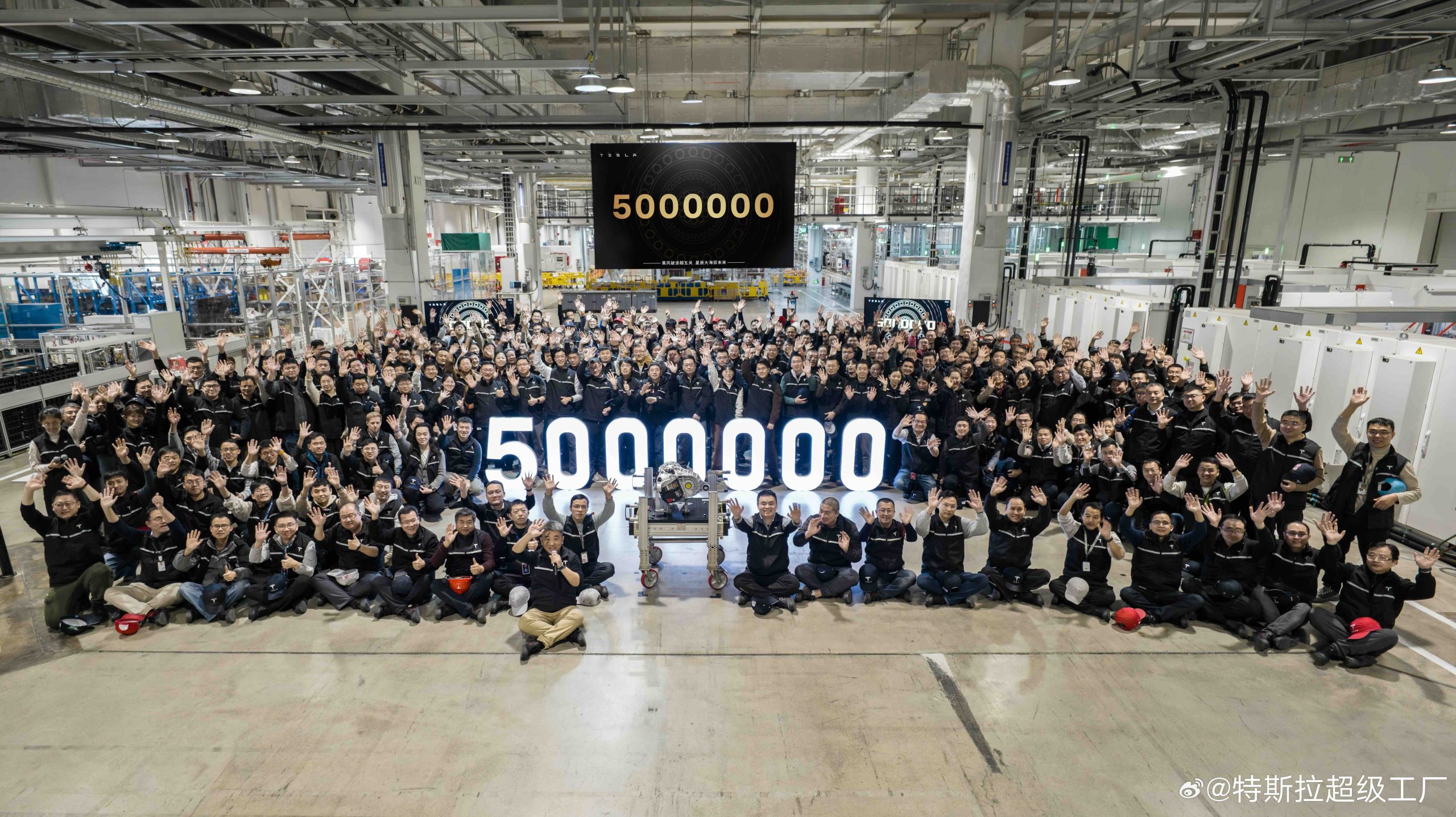
Tesla China has reached another manufacturing milestone at Gigafactory Shanghai, rolling out the facility’s 5 millionth locally produced drive unit.
The milestone was celebrated by the company in a post on its official Weibo account. In its post, the Giga Shanghai team could be seen posing with the 5 millionth drive unit.
Giga Shanghai’s major benchmark
The milestone drive unit was produced at Gigafactory Shanghai, which produces the Model Y and the Model 3. In a release, Tesla China noted that its three-in-one integrated electric drive system combines the motor, gearbox, and inverter into a single compact assembly. This forms a powerful “heart” for the company’s electric cars.
Tesla China also noted that its drive units’ integrated design improves energy conversion efficiency while reducing overall weight and complexity, benefits that translate into stronger performance, improved handling, and longer service life for its vehicles.
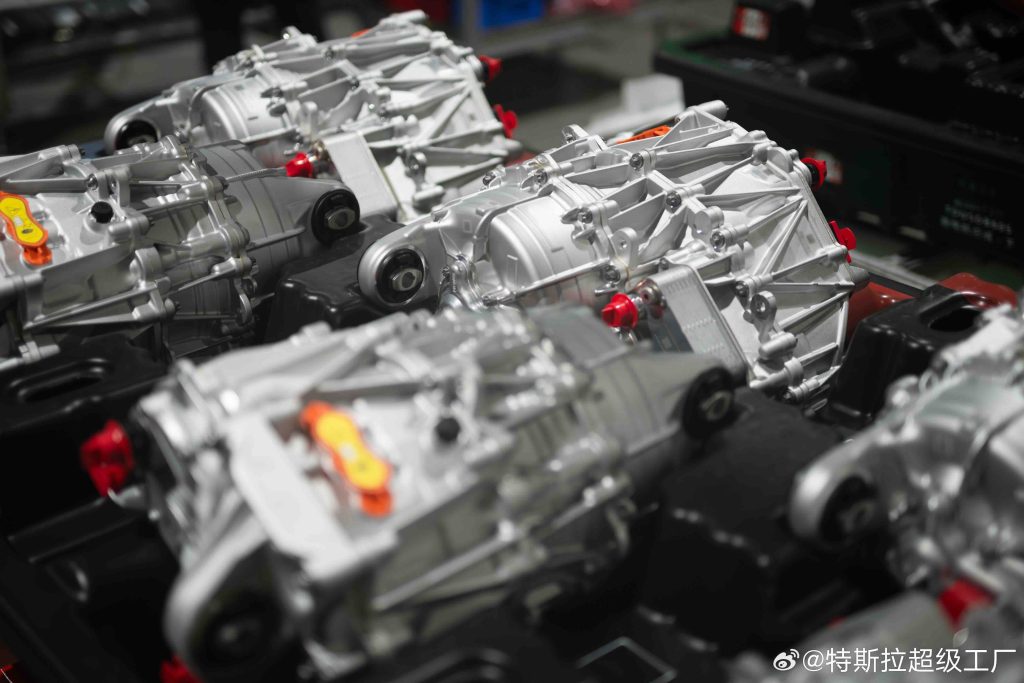
The new milestone builds on earlier achievements at the same site. In July 2024, Tesla announced that its 10 millionth electric drive system globally had rolled off the line at the Shanghai plant, making it the first self-produced Tesla component to reach that volume.
More recently, the factory also produced its 4 millionth China-made vehicle, a Model Y L. The factory has also continued hitting global production milestones, rolling out Tesla’s 9 millionth EV worldwide late last year, with the landmark vehicle being a Tesla Model Y.
Tesla China’s role
Construction of Giga Shanghai began in January 2019, with production starting by the end of that year. This made it the first wholly foreign-owned automotive manufacturing project in China. The facility began delivering Model 3 vehicles locally in early 2020 and added Model Y production in 2021. The plant is now capable of producing about 1 million vehicles annually.
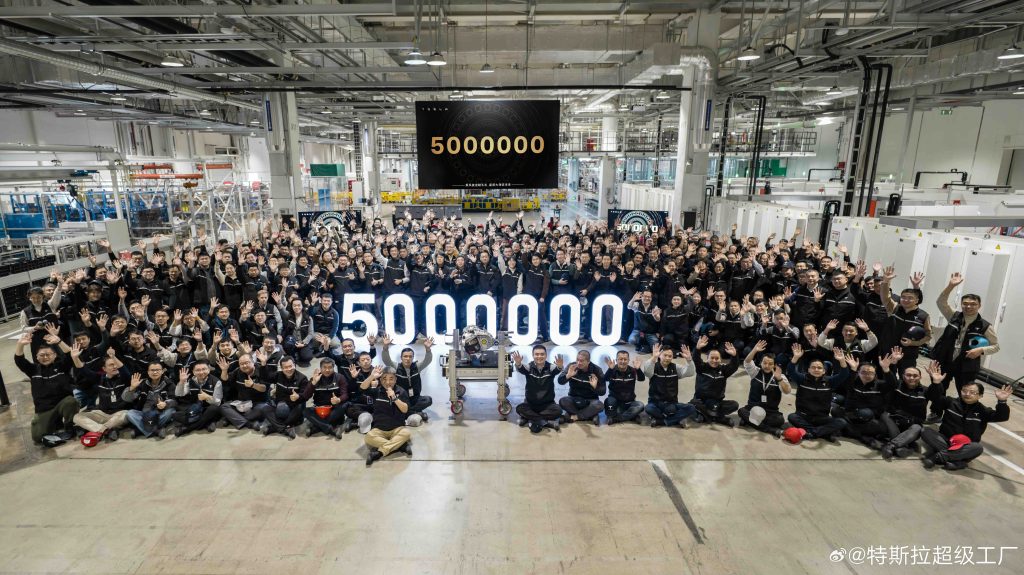
Throughout 2025, Giga Shanghai delivered 851,732 vehicles, representing a 7.08% year-on-year decline, according to data compiled by CNEVPost. Even so, recent months showed renewed momentum.
In December alone, Tesla China recorded wholesale sales of 97,171 vehicles, including domestic deliveries and exports, making it the company’s second-best monthly total on record, per data from the China Passenger Car Association. Retail sales during December reached roughly 94,000 units, up about 13% year over year.








